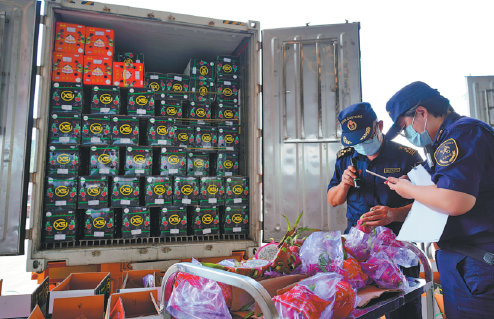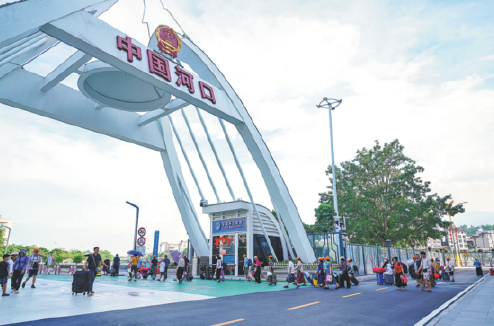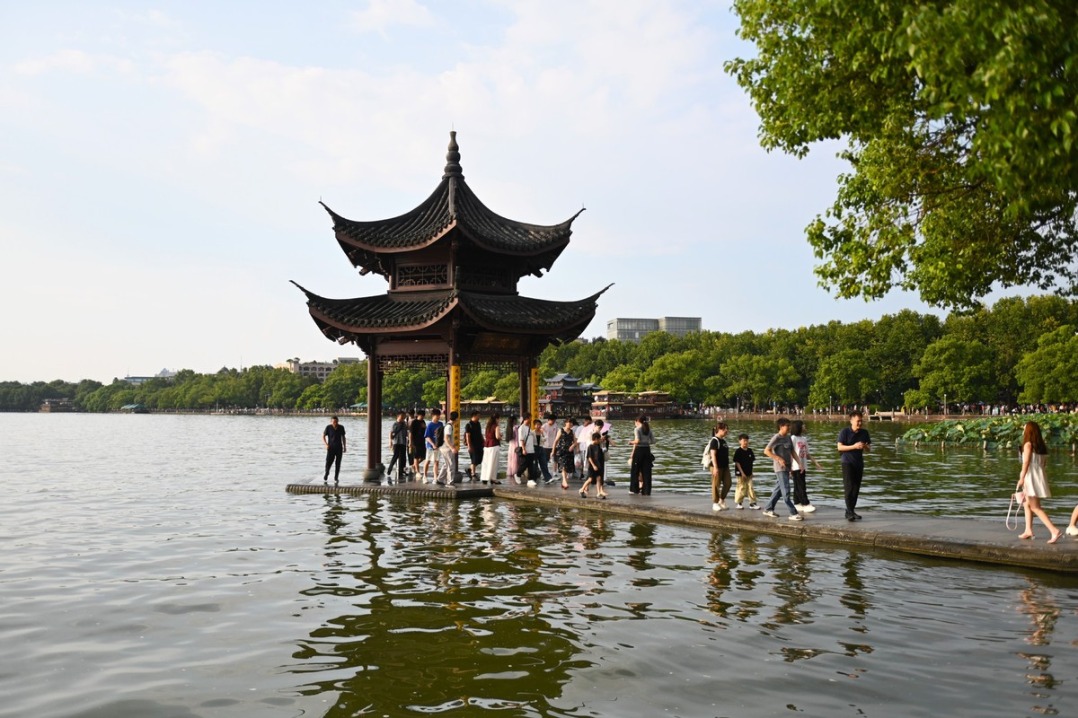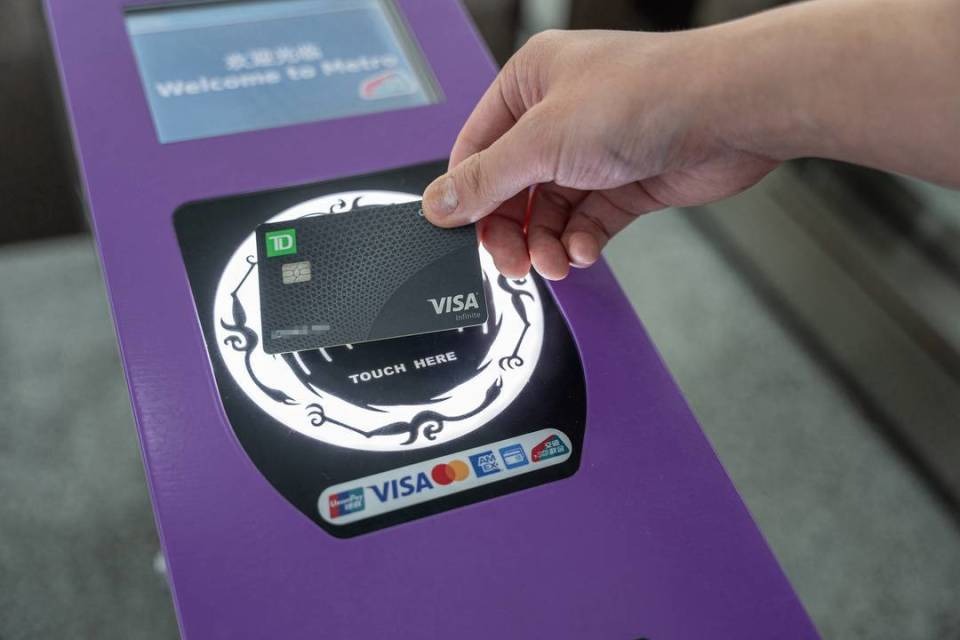Cross-border trade driving China-Vietnam ties
Nations capitalize on business cooperation as shopping boom pushes increased consumption

KUNMING — At dawn, Vietnamese tourists lined up at Hekou Port, the largest land port along the Yunnan section of the China-Vietnam border, drawn by more than mere sightseeing.
Amid the lines, men carrying bulging sacks filled with household appliances, small consumer goods, and snacks are a common sight. This bustling scene is driven by Vietnam's cross-border shopping boom, propelling a wave of Chinese goods southward.
This shopping frenzy is reshaping the border economy as foreign consumers increasingly flock to Chinese e-commerce platforms for Made in China products.
These vibrant exchanges of goods and people are a microcosm of the ties between China and Vietnam, which have been continuously deepened by the engines of shopping, trade and tourism.
Nguyen Hong Nhu, known as "A Rou from Vietnam" on Douyin (Chinese version of TikTok), is capitalizing on this trend. Based in Yiwu, Zhejiang province, the renowned global trading hub in East China, she sources products from its vast market for Vietnamese clients. Starting by reselling small goods online, she and her Chinese husband now ship over a dozen containers monthly to Vietnam, filled with daily essentials, hardware and toys.
"Chinese goods are high-quality, affordable and the supply chain is incredibly fast," she said. Her trading company now manages booming demand, especially bulk orders from Vietnamese businesses.
This offline frenzy is mirrored at the China-ASEAN (Hekou) Cross-border E-logistics Industrial Park, where over 30 livestream studios buzz with Chinese and Vietnamese sales pitches. Many Vietnamese streamers visit Chinese factories, where they showcase products live to their audiences back home.
"These Made-in-China goods are shipped from bonded warehouses in China and can reach Vietnam within a week," said Chen Dajin, chairman of Muabay (Yunnan) Cross-border E-commerce Co Ltd, which is based locally.
The trend spills into lifestyle and culture. At a Pop Mart store in Kunming, capital of Yunnan province, Vietnamese shoppers join visitors from Thailand and Malaysia hunting for collectibles.
While consumer goods flow south, Vietnamese agricultural produce heads north. Trucks constantly shuttle at Hekou, laden with Yunnan vegetables, flowers and fruit, alongside Vietnamese dragon fruit, coffee, cassava — and now, passion fruit and lychee.
"Passion fruit is nutritious and uniquely flavored, with growing demand in China. Vietnam's warm climate makes it a key producer," said Li Fanjin, head of Guangxi Tianye Import and Export Trading Co, adding that sourcing from neighboring Yunnan and Guangxi "saves time, cuts logistics costs and reduces transit losses".
Vietnam's lychee season sees over 100 trucks cross daily into China via Hekou — each clearing Customs in under 10 minutes on average.
Customs statistics show that in the first half of this year, Hekou Customs processed 29,000 metric tons of imported Vietnamese lychees worth 160 million yuan ($22.4 million), representing year-on-year increases of 104.7 percent in volume and 66.9 percent in value, respectively.
A mid-April joint statement from China and Vietnam welcomed protocols for Vietnamese exports of peppers, passion fruit, raw and edible birds' nests, and rice bran to China.
Hekou Customs data highlighted the growing trade, with more than 200,000 tons of Vietnamese fruit worth 700 million yuan entering China in the first four months of 2025.
"China-Vietnam agricultural cooperation is highly complementary, with vast potential and tangible results," said Ma Zhigang, an official with China's Ministry of Agriculture and Rural Affairs.
In 2024, trade between Yunnan and Vietnam reached 22.1 billion yuan, up 18.6 percent year-on-year. Yunnan's specialty agricultural products and machinery find robust markets in Vietnam, while Vietnamese tropical fruit and seafood delight Yunnan consumers.
Cooperation has deepened as Yunnan recently exported its first batch of 8-ton freshwater-farmed live sturgeon to Vietnam. In Yunnan's Malipo Border Economic Cooperation Zone, near the border, Vietnamese durian, coffee beans and other raw materials are processed into high-value, freeze-dried snacks and essential oils for broader markets.
Beyond goods, people-to-people exchanges binds the nations. Hekou, adjacent to the Vietnamese province of Lao Cai, buzzes with Vietnamese tourists using shared e-bikes, paying for bubble tea via mobile apps, embracing Chinese culture and enjoying a digital lifestyle just like that of Chinese people.
"You can rent an e-scooter at the port just by scanning a QR code — then you can go anywhere," said Hoang Thi Sinh, a tourist from Lao Cai. Her friend Hoang Thu Hien has been fascinated by hanfu (traditional Chinese attire) and Chinese culture since childhood. "It's such a joy to finally try it."
Tourism drives significant consumption. On bullet trains from Hekou to Kunming, large suitcases are common. "They all plan to buy some local specialties while traveling — traditional Chinese medicines, wild mushrooms and flower cakes from Yunnan are particularly popular among Vietnamese visitors," said Nguyen Manh Tuan, a tour guide with Vietnam's Viet Image Inter Travel Co.
In 2025, more than 10,600 Vietnamese tour groups — totaling over 120,000 visitors — entered China via Hekou Port, according to official data.
At TCM stores in Beijing, Vietnamese tourists often preordered goods via apps and left with full suitcases, according to Vietnamese-speaking tour guide Yu Tao.
For cross-border commuter Nguyen Thu Huyen, life seamlessly blends both sides. She uses lifestyle and shopping apps like Meituan, Taobao and Pinduoduo. "Chinese goods are affordable and trendy. They're a hit with Vietnamese youths, and I often buy for family and friends back home."
This grassroots synergy — powered by digital platforms, complementary industries and cultural affinity — has fueled a robust partnership between the two countries. China has remained Vietnam's largest trading partner for over two decades, while Vietnam is China's top trading partner within ASEAN. Bilateral trade exceeded $260 billion in 2024.
Nguyen Hong Nhu expressed optimism about being part of the growing cultural and economic ties between China and Vietnam. "When our two countries do well, so do we — and life looks more promising."
Xinhua

































